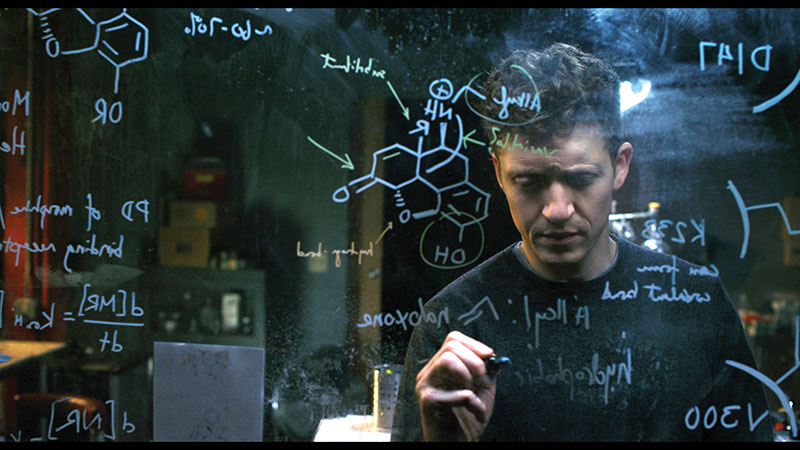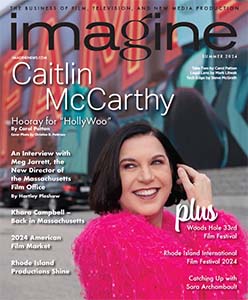By Lori Grenier
New England winters can be incredibly beautiful and unmercifully harsh. There is always a nostalgic anticipation of windswept mounds lining the streets of quaint little towns. The diamond like quality of ice laden trees like masks on the dangers that nobody sees. The reality of this season is,it brings a lot of pain.
Winter 2014 was shaping up to be another long, hard grind. Freezing cold temperatures brought heaps of snow making a walk to your car seem like a marathon. There is the clothing ritual, the layering of undergarments, outerwear and accessories, followed by, heating up the car, scraping off the snow, digging out the driveway etc…, by the time you actually get going, your hands are frozen, you can’t feel your fingers or toes. You are numb, in effect, painless.
Imagine what it would be like to have an actual genetic disorder that renders your body incapable of feeling physical pain. CIP, (congenital insensitivity to pain) affects only one in a million people worldwide. This is what the story of Painless is all about.

Evalena Marie as Shani and Joey Klein as Henry Long in Painless.
PAINLESS is a modern-day fable about loneliness and alienation. It’s about the sacrifices one makes for what they believe in. Writer/director Jordan Horowitz goes on to say, these are feelings I think we have all experienced at some point in our lives. Horowitz, a native New Yorker, wrote this science based drama prior to his 2015 documentary ANGEL OF NANJING, which took thirteen best film and director awards from festivals around the world including: the Rhode Island Film Festival. Horowitz teamed up with the award winning Rhode Island duo, of Anthony Ambrosino and Nicholas Delmenico whose last film, ALMOST HUMAN, premiered at the Toronto International Film Festival where it was purchased by IFC. This talented group of filmmakers have now achieved another big dream with PAINLESS. They have been invited to hold its world premiere screening at the prestigious Cinequest Film and VR Festival (CQFF) on March 2nd, 2017.
In PAINLESS we see realize that most of us try to avoid pain. Henry, however, has spent his entire life trying to find it.

Joey Klein as Henry Long, Director Horowitz, Evalena Marie as Shani.
Pia Chamberlain wrote, “Henry looks normal, and he is anything but. Unable to feel physical pain, he lives in constant fear of an injury or illness he cannot detect. Henry’s life work is to nd a cure for his condition, and to him, daily life—and human interaction—are only a distraction from his quest. His best friends are his mice that he uses to test his unsuccessful experimental treatments. A budding friendship with Shani, a caring barista, seems to create a “chink in his armor.” But a chancy partnership with a brilliant, discredited scientist puts him at a crossroads. Is he willing to risk everything for a cure?” That’s quite a set up.
When I met the film’s star Joey Klein, a Montreal native, I joked with him about being prepared for our outside shoot. So do you think you can handle a few weeks outside in NYC? I’m going to be your hair and makeup artist. I joked, “You might get hat hair”. He replied with a silent glare. I said, ”just kidding, you are from Canada, I get it, you know cold.” He then replied in a dead serious tone, “I’m Henry Long, I can’t feel any pain, cold or otherwise.” I knew right then and there this lm was going to be good. Joey Klein is a busy lm and television actor who has been working for the last decade, with roles in AMERICAN GANGSTER, ON THE ROAD, and 12 Monkeys: The Series. He most recently wrote and directed the feature lm THE OTHER HALF, which premiered at the 2016 South by Southwest Film Festival.

Clockwise from Left: Director Jordan Horowitz,
Script Supervisor Yvonne LaBarge, 1st Assistant
Camera Ron Hagerman, 2nd Assistant Camera
Richelle Topping, Joey Klein as Henry Long.
As we wrapped on our Rhode Island location scenes we headed off to the Big Apple. We had a skeleton crew of about fifteen people with us. Although we just crossed into March, it was still freezing cold. Our collective commitment to this passion project was partly fueled by our pizza budget and the desire to make a great and sensitive film.
We all took on this film and the elements, because let’s face it; there’s not much work in the winter. Anthony Ambrosino put it like this; “it’s a time when we can truly lavish all our attention and passion on a small Indie project. It’s a window of opportunity to test your skills and budget to accomplish something creatively satisfying.” Despite the small budget of this lm, the imagery and scope will read grand. The landscape rich backdrop of New York City along with some fortuitous Rhode Island locations will be sure to please the eyes. From wardrobe to props, lighting to makeup, everyone gave their all to make PAINLESS come to life.
One of the highlights, an eye opener for me was in New York when we were filming in the subway on a moving train. We had been setting up for roughly a half hour, when I noticed the pile of trash I had been standing across from starts to move. Out from the heaping pile of discarded paper and rags emerged an elderly couple well into their late 60s. I was shocked that they had been under the rubble all that time and no one had noticed them until they crawled out. It was painful to see. I remember thinking, they must be numb, and I can’t imagine how they feel living like that. I thought maybe they can’t feel pain physically or mentally anymore, that’s how they survive.
We then moved on to the train, it was in this scene that I had to create some special effects. I had to make the lead Henry, look like he had been beat up. A couple of real life tough guys were riding along with us watching this scene play out. When one of the gang members remarked, nice work it looks real, looks like it hurts. Another member of the group said I messed a guy up like that last night, I hurt him real good! I turned and said, this story is about people who can’t feel physical pain. He replied, that’s dope, sounds like a super power. As they laughed I thought his comments were telling. I felt his words betrayed his own inner pain.

Joey Klein as Henry Long in Painless
They say art imitates life, well in this case I believe life was imitating art. Although it’s a rare condition, there are examples of numbness and inability to feel pain all around us. Some call it insensitivity. The good news is that an emotional connection will bond you to this lm and make you feel something, empathy, compassion, perhaps sadness but don’t despair. It’s having the physical ability to emote or express your feeling/pain like the act of crying that will make you happy to be able to feel something. It’s part of what makes us human.
The ironic twist to this story is that a few weeks after we wrapped I went to a podiatrist for pain in my foot. The doctor took X-rays and came back and said, I see the problem, you broke your big toe. I was shocked, he then replied to my confusion, he said, you must have been numb from being outside, I guess the break was painless.
Lori Grenier is a Film Set Hair and Makeup Artist and budding actor. She frequently writes her experiences about being on sets where she spends a lot of time.




